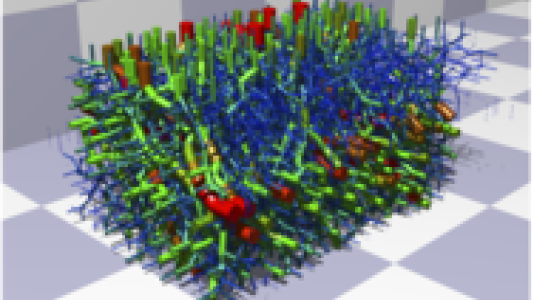
Rolling friction at the interface between moving parts has long attracted the interest of researchers in applied mechanics. Among the challenges facing model developers, however, has been the large number of parameters required to simulate rolling friction, for example, a rolling tire.
Researchers at Argonne National Laboratory and the Università degli Studi di Parma in Italy have now developed a complementarity-based rolling friction model that requires only a few parameters and is applicable to problems with a large number of parts or with requirements of high efficiency.
The new method offers several additional advantages over classical approaches. It encompasses both the moving and static cases. Moreover, whereas most models approximate contact forces by smooth functions that require short timesteps, leading to high computational times, the Argonne-Parma model handles nonsmooth mechanical problems while allowing larger timesteps.
“A natural application of our model is in simulating the dynamics of granular materials – for instance, in a plant for separating raw materials,” said Mihai Anitescu, a computational mathematician in Argonne’s Mathematics and Computer Science Division. “Of course, one could simulate all the particles, but this would take an enormous amount of time. By using increasing values of rolling and spinning friction in a model with simple spheres, we obtain excellent, stable, and robust solutions.”
The researchers demonstrated the success of their approach by simulating the stacking of 10,000 particles into a flat container.
“One of the areas that might benefit from this research is pharmaceutical engineering, where multibody dynamics can be used to study processes that involve milling, blending, and compression of granular matter,” said Anitescu.
For more information, see A. Tasora and M. Anitescu, “A complementarity-based rolling friction model for rigid contacts,” Meccanica 48, no. 7 (2013) 1643-1659.